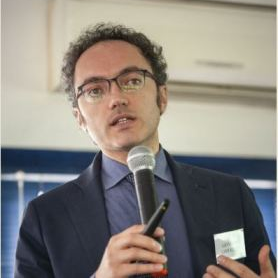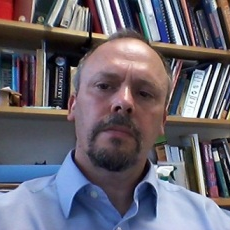Photocatalytic Disinfection of Water: Mechanism and Application
A special issue of Water (ISSN 2073-4441). This special issue belongs to the section "Wastewater Treatment and Reuse".
Deadline for manuscript submissions: closed (30 September 2020) | Viewed by 1519
Special Issue Editors
Interests: advanced oxidation processes, water reuse, nanotechnology, wastewater disinfection, antibiotic resistance
Special Issues, Collections and Topics in MDPI journals
Interests: advanced oxidation; nanotechnology; water treatment; water quality; environmental sensors; environmental catalysis
Special Issues, Collections and Topics in MDPI journals
Interests: aquatic (eco)toxicology; nano(eco)toxicology; toxicant effects on populations; factors modifying toxicity; inorganic water chemistry; wastewater treatment; soil and sediment remediation; recovery and reuse of by-products; water reuse
Special Issues, Collections and Topics in MDPI journals
Interests: photocatalysis; water treatment and disinfection; blue economy; water reuse; circular economy
Special Issues, Collections and Topics in MDPI journals
Interests: Low-cost and sustainable technologies; water purification; water pathogens; contaminants of emerging concern; reclaimed wastewater and reuse; solar technologies; advanced oxidation processes
Interests: catalytic materials; environmental remediation; emergent pollutants; antimicrobials; green new-deal
Special Issues, Collections and Topics in MDPI journals
Special Issue Information
Dear Colleagues,
The development of water disinfection technology is still a scientific and technical challenge, since conventional methods have shown several disadvantages mainly related to the formation of potentially hazardous disinfection by-products (DBPs). In recent years, there has been a growing interest of research in photocatalysis, a process included in a special class of oxidation techniques defined as advanced oxidation processes (AOPs), characterized by the production of ·OH radicals. Photocatalytic processes show significant advantages over other AOPs, such as operation under ambient temperature, pH, and pressure, as well as the possibility of using solar light as a radiation source, thus reducing the energy costs.
Photocatalytic disinfection has been reported to efficiently inactivate different kinds of pathogenic microorganisms (viruses, bacteria, fungi, and protozoa) as well as to remove multi-drug-resistant bacteria, acting against the highly undesirable transfer of antibiotic resistance genes amongst them.
Several studies have been carried out placing special emphasis to the mechanisms acting during the process of photocatalytic disinfection and on experimental systems designed to optimize this disinfection technology. Many efforts have also been devoted to the development of composite materials to be utilized in immobilized photocatalytic systems, such as wall and fixed-bed reactors, looking for an alternative to allow continuous wastewater treatment without the need of a post-treatment catalyst separation step, as it happens in slurry batch processes.
In particular, the topics of interest of this Special Issue include (but are not limited to):
- Recent advances in antimicrobial photocatalysts
- Antimicrobial photocatalytic materials
- New generation of antimicrobial catalysts
- Water treatment in coated reactors
- Mechanistic understanding of photocatalytic disinfection
Dr. Giusy Lofrano
Prof. Dionysios (Dion) D. Dionysiou
Prof. Giovanni Libralato
Dr. Patrick Dunlop
Dr. Pilar Fernandez
Dr. Sami Rtimi
Prof. J. Anthony Byrne
Guest Editors
Manuscript Submission Information
Manuscripts should be submitted online at www.mdpi.com by registering and logging in to this website. Once you are registered, click here to go to the submission form. Manuscripts can be submitted until the deadline. All submissions that pass pre-check are peer-reviewed. Accepted papers will be published continuously in the journal (as soon as accepted) and will be listed together on the special issue website. Research articles, review articles as well as short communications are invited. For planned papers, a title and short abstract (about 250 words) can be sent to the Editorial Office for assessment.
Submitted manuscripts should not have been published previously, nor be under consideration for publication elsewhere (except conference proceedings papers). All manuscripts are thoroughly refereed through a single-blind peer-review process. A guide for authors and other relevant information for submission of manuscripts is available on the Instructions for Authors page. Water is an international peer-reviewed open access semimonthly journal published by MDPI.
Please visit the Instructions for Authors page before submitting a manuscript. The Article Processing Charge (APC) for publication in this open access journal is 2600 CHF (Swiss Francs). Submitted papers should be well formatted and use good English. Authors may use MDPI's English editing service prior to publication or during author revisions.
Keywords
- Photocatalysis
- Water/Wastewater
- Microbial abatement
- Materials’ Characterization
Benefits of Publishing in a Special Issue
- Ease of navigation: Grouping papers by topic helps scholars navigate broad scope journals more efficiently.
- Greater discoverability: Special Issues support the reach and impact of scientific research. Articles in Special Issues are more discoverable and cited more frequently.
- Expansion of research network: Special Issues facilitate connections among authors, fostering scientific collaborations.
- External promotion: Articles in Special Issues are often promoted through the journal's social media, increasing their visibility.
- Reprint: MDPI Books provides the opportunity to republish successful Special Issues in book format, both online and in print.
Further information on MDPI's Special Issue policies can be found here.











